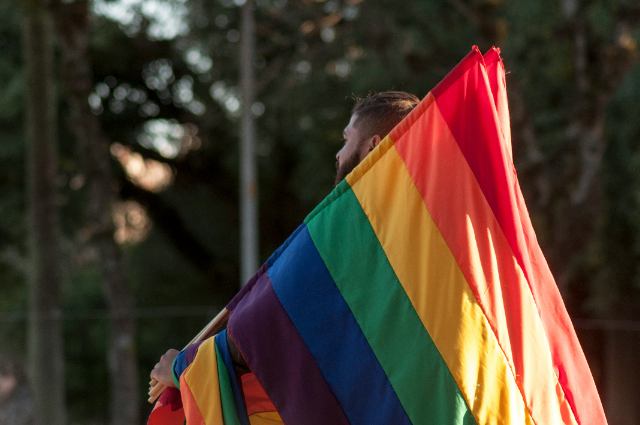
Photo by Arthur zKrause on Unsplash
As kids, we used to find joy in witnessing a rainbow after a good rain shower. Rainbows were a rare phenomenon for us back then. Growing up, we studied science, we learned a lesson about the spectrum of light. When light passes through a prism, it separates into a spectrum of colors, ranging from violet to indigo, blue, green, yellow, orange, and red. This phenomenon can be recreated in a laboratory environment. Yet, we still had to wait for rain to witness a natural rainbow in the sky. Such is the childhood.
At birth, families often announce our arrival with a predetermined gender identity, labeling us as either a girl or a boy. This label precedes even our name, and it is important to understand the distinction between sex and gender, as they are not synonymous.
Gender defines the socially constructed role that we are supposed to carry on in society. Our behavioral pattern is defined by this term. Traditionally, societies have assigned certain behaviors and clothing choices (like pants or salwar suits) to each gender. Sex refers to biological attributes like chromosomes and the anatomy of a person. It is associated with the physical and physiological features of a person, including their hormonal aspect. Such is the biology of a person.
In the Holy Bible, it is written, “Everyone is born with love and intention. Every part of us is divinely formed with dignity- both our body and inner knowledge of self.” The inner knowledge of self is the biggest goal of a living being. Understanding and attuning with the inner voice of this divine body is what Nirvana signifies. In the process of searching for inner knowledge of self, many have come to understand the difference between their gender and sexual orientation of themselves. They have understood that ‘Gender is Spectrum’.
Genders other than Men and Women have always existed throughout history. However, society could not accept them due to not having much understanding of such spectrum. Eventually, during the 1900s, the world witnessed a new kind of movement. A community's civil rights movement rose for their rights of equality, acceptance, identity, and respect. This community is now known as, LGBTQ+. Lesbian, Gay, Bisexual, Transgender, and Queer, are not just some fancy labels designed by people, but they express the gender identity and sexual orientation features of some people who feel different from the binary of man and woman.
LGBTQ+ Movement History in India
The Indian culture recognizes gender beyond binary. Hijras are the transgender community who have been part of our society for centuries. But, the struggle for recognition has been long too. During Colonial rule, Section 377 of the IPC was imposed that criminalized “carnal intercourse against the order of the nature”. This made those male victims vulnerable who had faced sexual assault. Thus, more than acceptance, this movement was majorly for the protection by law.
Challenges Faced by The Community
- Social Discrimination: Social Discrimination: Feeling of alienation due to differences has led to social discrimination. Lack of awareness and understanding can lead to social exclusions.
- Lack of Representation: Due to limited representation in mainstream media and the social sphere, the community hardly has any platform to put up their problems and demands.
- Healthcare: Social stigma and hesitation towards the LGBTQ community have led the community towards limited access to sensitive health care, anxiety and stress, self-harm, and along with mental health issues.
Despite all the challenges, LGBTQ+ have now not stopped speaking for themselves. June is now recognized internationally as the Pride Month. Pride Parade is celebrated globally to acknowledge their history, struggles, achievements, and ongoing fight for equality and justice. In India, the LGBTQ+ had achieved a significant victory with the Supreme Court’s decriminalization of Section 377 of IPC in 2018. Now, we can proudly see LGBTQ+ members proudly participating in mainstream economic activities. Furthermore, the education system has incorporated the third gender as an option to choose for students on official forms. Even movies like Badhai Do, and Subh Mangal Jyada Savdhan, which portray the life of LGBTQ+ members are appreciated by the public.
However, with the spectrum of gender, the spectru of society evolves too. There’s still an ongoing fight for equality for the community. Same-sex marriage is still not legalized. The non-binary couple does not enjoy inheritance rights or joint adoption. Lack of awareness and understanding of the LGBTQ+ community in Indian society, especially in rural areas, still does not let people come out of the closet.
Social media, growing activism, empathy, and increasing support for the LGBTQ+ community offer help for a more inclusive future.
